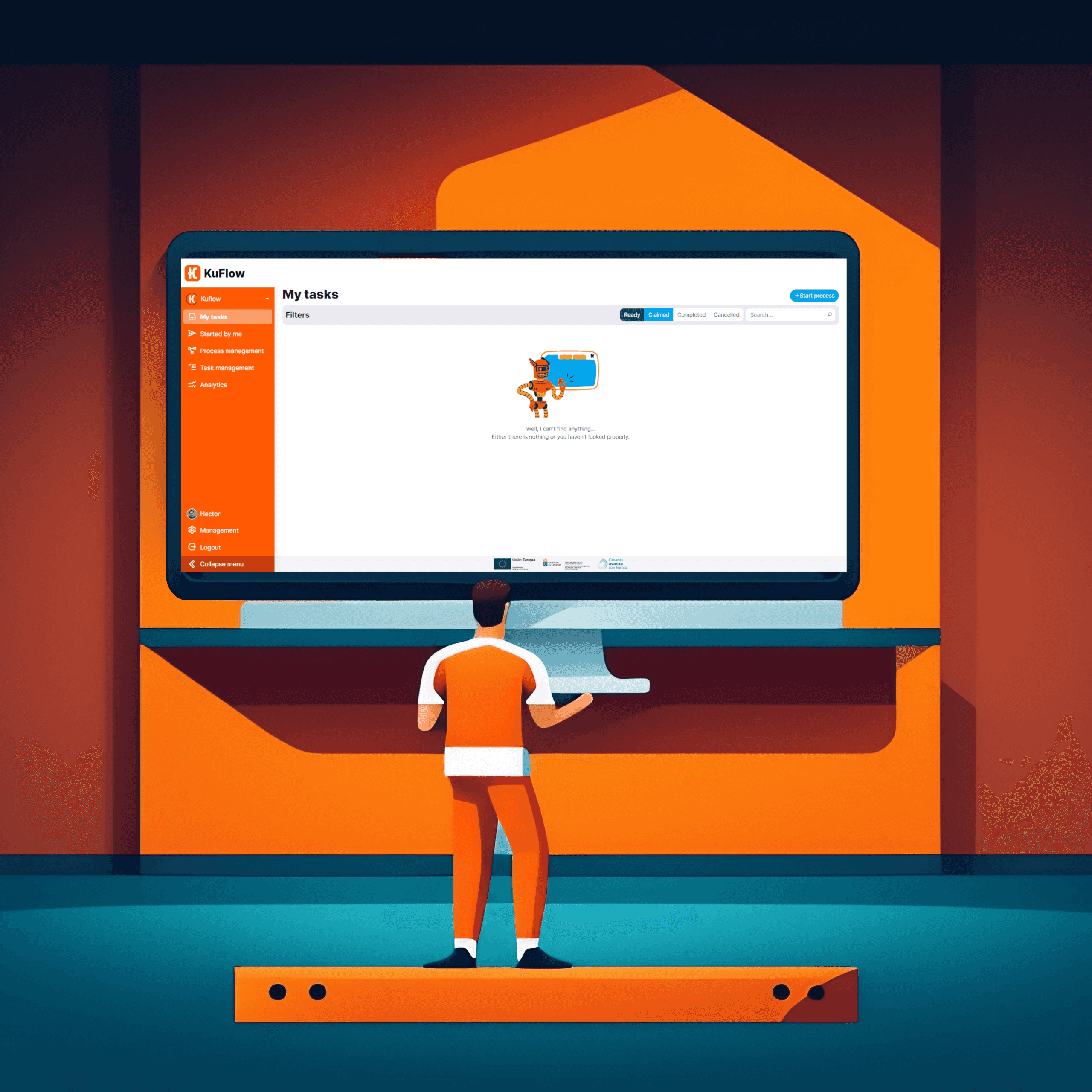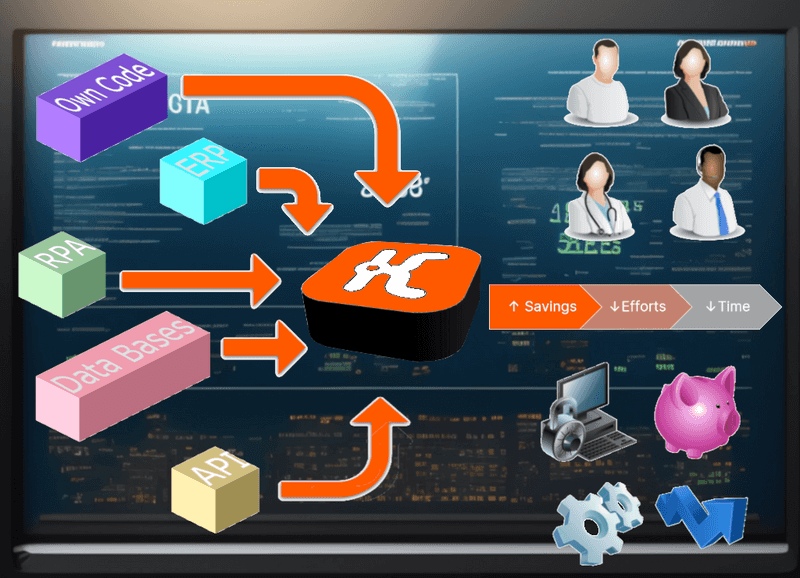KuFlow as Processes Orchestrator
Published 06-04-2023 by Hector Tessari - KuFlow Team

Credits: Created by Lexica - Edited by Hector Tessari
Process orchestration has become an essential aspect of business process management and workflow automation. It involves coordinating a series of tasks or activities that need to be executed in a specific order to achieve a specific business objective or outcome. In this blog post, we'll explore what process orchestration is, provide examples, and review what KuFlow is, a dev-friendly platform that can help you orchestrate your processes.
What is Process Orchestration?
Process orchestration is the coordination of a series of tasks or activities that need to be executed in a specific order to achieve a specific business objective or outcome. It involves designing, managing, and automating complex workflows that involve multiple systems, applications, and human activities. The process orchestration platform provides a central system to define the workflow, assign tasks to specific users or systems, monitor progress, and manage exceptions or errors. The platform may also include tools for data integration, analytics, and reporting to provide insights into the performance of the process and identify areas for improvement.
Workflow as Code
Workflow as Code is a technique that involves codifying the rules and steps necessary to carry out a business process, enabling it to be executed automatically, mostly, without the need for human intervention. This approach is increasingly important in a world where competition is fierce, and processes need to be executed quickly and accurately.
It is a popular concept in the DevOps community, where the entire process orchestration is defined as code, allowing for easy automation and continuous integration and delivery. By using Workflow as Code, developers can create, test, and deploy workflows and processes in a more efficient and reliable manner, automating complex workflows involving multiple systems and applications.
Examples of Process Orchestration
One example of process orchestration is the onboarding process for a new employee. The process may involve multiple steps, such as verifying the new employee's identity, setting up their email account, assigning them a company laptop, and providing access to the company's internal systems. The process orchestration platform would define the workflow, assign tasks to specific users or systems, monitor progress, and manage exceptions or errors.
Another example of process orchestration is the order fulfillment process for an e-commerce site. The process may involve multiple steps, such as receiving the order, verifying payment, checking inventory, packaging the product, and shipping the product. The process orchestration platform would define the workflow, assign tasks to specific users or systems, monitor progress, and inform users of exceptions or errors.

About KuFlow
KuFlow is a Digital Process Automation tool that operates on a "Workflow as Code" paradigm. It acts as an orchestra conductor, directing the rhythm of business processes to flow efficiently and add value to the organization. It provides a developer-friendly platform that can operate with RPA platforms such as UI.Vision, Robot Framework or UI Path to automate tasks at the most basic steps of every process. KuFlow is a layer that builds over Temporal.io and provides additional features such as authorization, authentication, data governance, and a collaborative user interface.
KuFlow's main focus is on process orchestration, making sure that each task is executed in an orderly manner and on time, much like a conductor directing a symphony. Together with humans and machines, Temporal.io is part of the band, working in conjunction with KuFlow to automate complex workflows and streamline business processes.
Conclusion
Process orchestration is an essential aspect of business process management and workflow automation. It involves designing, managing, and automating complex workflows that involve multiple systems, applications, and human activities. KuFlow is a dev-friendly platform that provides a simple, yet powerful, interface for defining and monitoring your workflows. With KuFlow, you can easily define your workflows as code, automate your processes, and monitor your workflows in real-time.
Visit us in KuFlow to start your automation journey.





